From The Strategy Gamer
CMO offers a host of new and exciting features that I’ve been eager to tear into. Except life had other plans and I’ve had to sit on the sidelines since launch. Now though I’m getting back into it and am going to walk through a scenario I’ve had in mind for awhile. The Soviet invasion of Sweden.
I know, stop the music, the Soviet Invasion of Sweden? Yup!
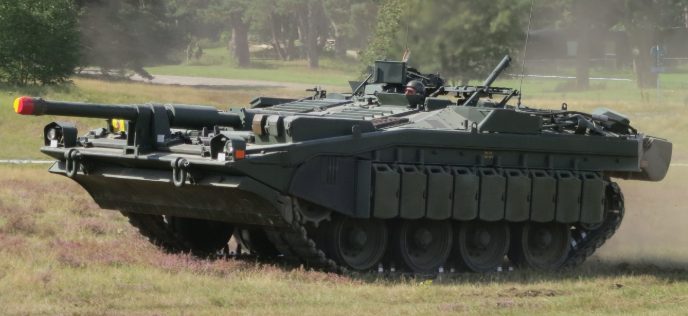
Sweden was neutral in the Cold War. A big empty spot on the map between Norway and the Soviet Union. Sweden managed a pseudo neutrality in WW2 but provided Germany with a good deal of iron ore. So what would they do, what could they do, in a Cold War gone Hot?
Luckily a good poster elaborated.
The strategic reality of Sweden in the Cold War revolves around The Great Naval Invasion. The Warsaw Pact was expected to only care about Sweden as a minor speed bump on the way to their strategic objectives – the Sound and the Norwegian North Sea harbors. Possibly they could be interested in Gotland (which was fundamentally indefensible, but the attempt had to be made) and in a decapitation strike on Stockholm as well, but that was pretty much it. Reaching the Norwegian coast was a matter of crossing many hundred kilometers of frozen taiga and sub-arctic mountains with incredibly poor infrastructure, and that war was expected to become the Winter War 2.0. The Sound and the decapitation strike though were a different matter. To accomplish either objective, a naval invasion was needed.
When people look at Cold War Sweden they kind of assume that NATO support must’ve been expected, because of course the idea of Sweden winning a war against the Soviet Union is absurd. However, Swedish operational planning did not actually expect or plan for any military NATO help. The NATO cooperation was on a subtler level and more political than anything else. If you’re thinking that, well, in that case the Swedish operational planning was pretty much a very complicated way to say dulce et decorum est pro patria mori and delaying the inevitable for as long as possible, then, well, you’d be wrong. The Swedish plan was to win the war, to win it alone, to win it quickly and decisively. Not winning in the sense of dictating terms from the ruins of Moskva, but winning in the sense of eliminating the military threat to Sweden for the immediate future. The planners saw one way to do that and then they bet on that horse with almost everything they had.
The way you win a land war in Asia is by not fighting it. Everyone knows this. Sweden attempting to delay the Soviet Union would be idiotic. There is nothing good that could ever come from that. Instead, the Swedish military focused with laser-like intensity on the Great Naval Invasion. It was the Soviet Achilles heel, the only point at which there was a fighting chance, the one moment where the war could be won. Push the landing force back into the sea, destroy the specialized landing craft (a scarce strategic resource for the Soviets) and there you go – you can sit back and stare at the Russians over the Baltic Sea in relative safety. If they establish a beachhead and start shipping in Guards tank armies, might as well throw in the towel immediately, because there is no winning that game.
This is what the S-tank was built for and why half of all the tanks in the country were stationed so stupidly close to the Iron Curtain (seriously, you could reach their tank garages with rocket artillery from across the Sound). East Germany and Poland were too close, the sea too narrow and the travel time too short for the navy and the air force (the Swedish air force was and to some extent still is specialized on anti-ship strikes) to take much of a bite out of the landing craft, so the army had to shoulder more of the burden. The plan in the 60’s and 70’s was to take every tank and APC that could be scrounged up and start rolling towards the sea as fast as the tracks would carry them. As soon as the brigades were concentrated and rolling on the open roads, they were expected to take horrifying losses from air strikes, but that was part of the calculation. Go for the beachhead, establish close contact as soon as possible to make it unpalatable for the enemy to use tactical nukes (since they’d be hitting their own guys too), and either you reach the sea or you run out of tanks. That’s it, that’s the plan, the one chance to win the war. If it doesn’t work, then the infantry brigades get to fill the entire southern half of the country with mines and it’s time for the delaying tactics while waiting for an unlikely bailout from NATO, but that doesn’t involve much tanking.
TheFluff
This stuck with me for a long time. Could Sweden have defeated the Soviets? They could swing through Finland and come from the north but it’s a loooong way with mediocre infrastructure.
But why would they risk an angry porcupine of S-Tanks? Soviet doctrine intended to capture from Shetlands north to Iceland and use it to harass incoming units from the US such as REFORGER showed. Without locking down Norway the US now had an unsinkable aircraft carrier that could hit at the North Flank of the Soviet advance.
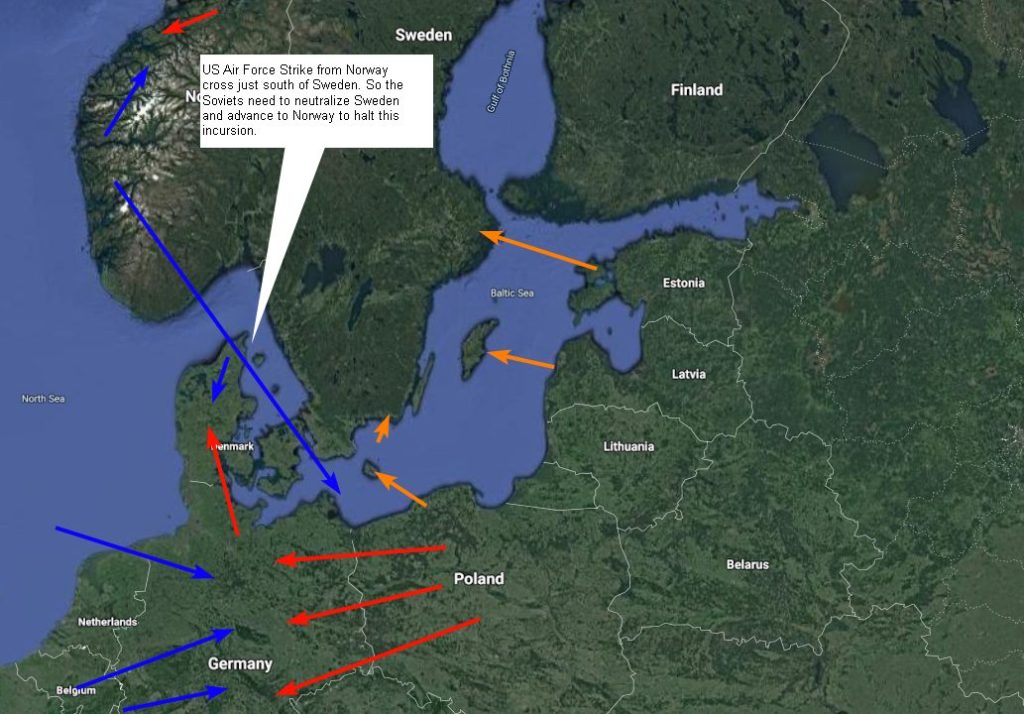
There is actually Soviet planning along these lines but it is from the 1950’s-1960’s. Stalin really didn’t care if his forces got nuked, things changed post Kruschev. As I don’t want scenario bloat, I’m going to just focus on Sweden.
Originally I wanted to focus on 1970 but I miss out on an iconic Swedish aircraft.
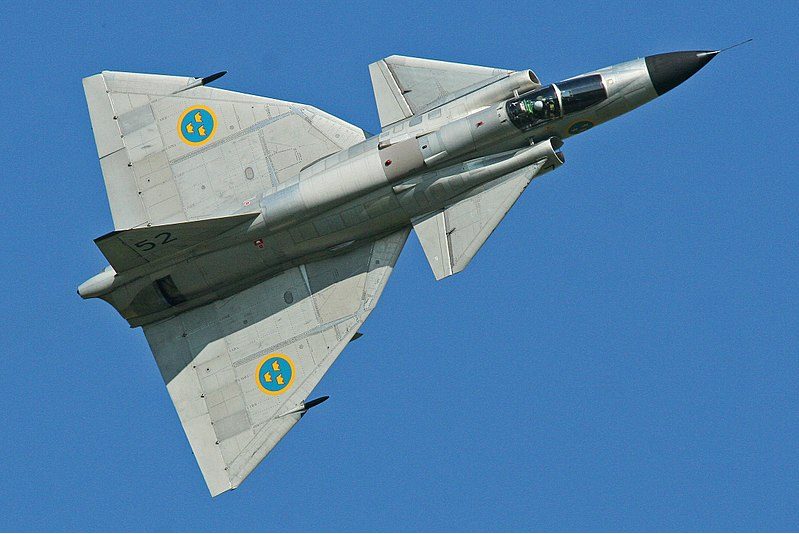
The Viggen.
On top of that I ran into an oddity of the CMO databases that proved frustrating. In a nutshell there is two databases. One for the Cold War, another for everything post Cold War. CMO uses database ID’s (DBID) to define if something is a pier or a missile battery.

Using the Import/Export Units function I can easily draw in a huge variety of Swedish installations. One problem though, they are all tied in to the DB3000 (Modern Database). So if I try to use the Cold War DB the DBID’s don’t match up.
I tried to get fancy and write a Python script to convert the installation files to a version with the proper DB3000 ID’s. It became an exercise in coding that I didn’t feel like getting into. (Note, let me know if you’re into Python…)
On the up side I just bumped it to 1990 and can easily use the DB3000 without any issues and still get a very wide variety of Cold War aircraft. Plus we get the Viggen at the peak.

We’re lucky as Sweden has a really great selection of installations available. Now this is just facilities, but it’s a great start.

With a couple of clicks I can load in all of the Swedish Air Wing bases. Note that I had to de-select some doubles and select the earlier option.
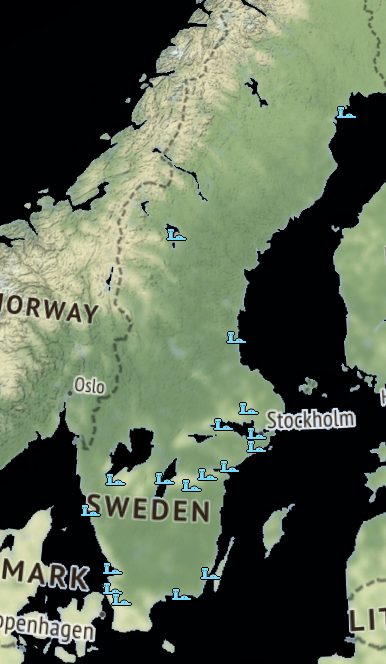
There! But we’ve got no planes. Or radar. Or surface units or…
Now things get a bit more interesting as I’ll have to research what was available and place it in likely positions. I’m using a Google Sheet to build my research. For starters I’m working off of a Rand research paper from 2005 that describes the state of the Swedish Air Force in 1990 very well.
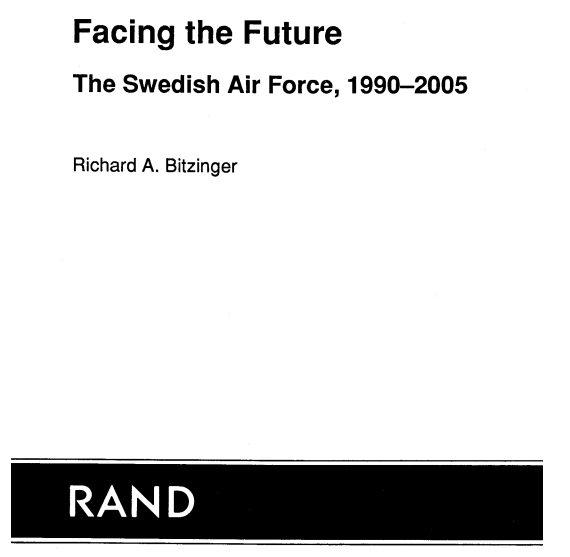
This gives us a great start, and for the moment all I’m focusing on is building the force allocation. I may use some lua scripting to populate the air bases as the generic unit names that CMO creates are US centric. I’ll probably use a Swedish Name Generator to give the scenario some flair.

I’m testing out Github for some version control. It’s not really designed for something like this as I can’t see my changes in the actual code (which is OK) so I just have to comment my versions accordingly. Hopefully this will help once the scenario gets larger. It really works well on code…
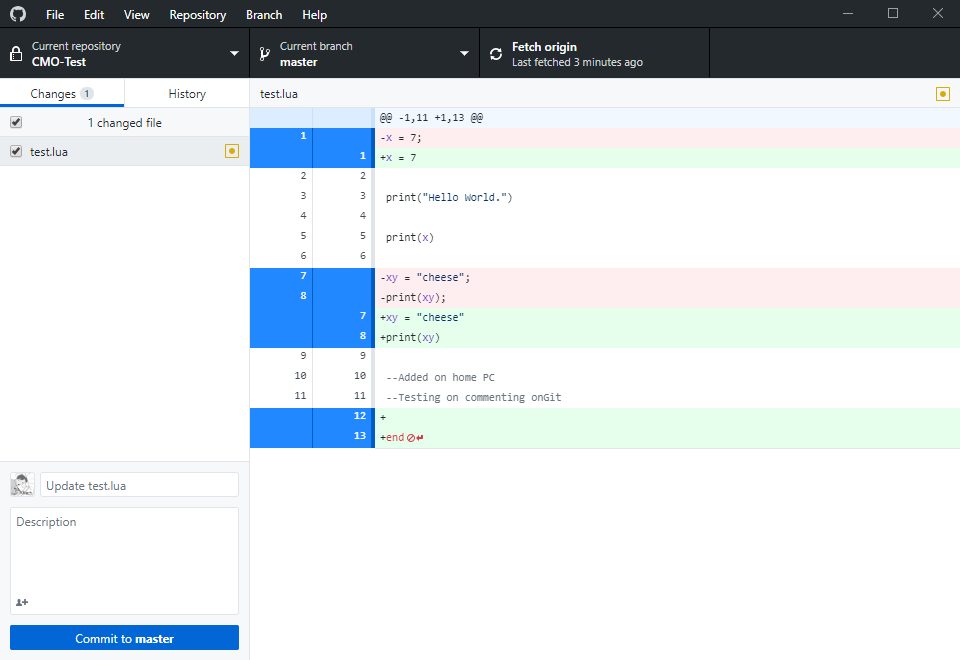
I’m working on storing all of my lua externally so as to make it easier for future reference. As you can see on the above generic lua script all of my changes are tracked.
Once I’ve got some bones on the scenario we’ll take another look.
The post Command : Modern Operations – Birth of a Scenario Part 1 appeared first on The Strategy Gamer.
Original URL: http://thestrategygamer.com/2020/03/11/command-modern-operations-birth-of-a-scenario-part-1/
